How to write a fantastic thesis introduction (+15 examples)
The thesis introduction, usually chapter 1, is one of the most important chapters of a thesis. It sets the scene. It previews key arguments and findings. And it helps the reader to understand the structure of the thesis. In short, a lot is riding on this first chapter. With the following tips, you can write a powerful thesis introduction.
Disclosure: This post may contain affiliate links, which means I may earn a small commission if you make a purchase using the links below at no additional cost to you . I only recommend products or services that I truly believe can benefit my audience. As always, my opinions are my own.

Elements of a fantastic thesis introduction
Open with a (personal) story, begin with a problem, define a clear research gap, describe the scientific relevance of the thesis, describe the societal relevance of the thesis, write down the thesis’ core claim in 1-2 sentences, support your argument with sufficient evidence, consider possible objections, address the empirical research context, give a taste of the thesis’ empirical analysis, hint at the practical implications of the research, provide a reading guide, briefly summarise all chapters to come, design a figure illustrating the thesis structure.
An introductory chapter plays an integral part in every thesis. The first chapter has to include quite a lot of information to contextualise the research. At the same time, a good thesis introduction is not too long, but clear and to the point.
A powerful thesis introduction does the following:
- It captures the reader’s attention.
- It presents a clear research gap and emphasises the thesis’ relevance.
- It provides a compelling argument.
- It previews the research findings.
- It explains the structure of the thesis.
In addition, a powerful thesis introduction is well-written, logically structured, and free of grammar and spelling errors. Reputable thesis editors can elevate the quality of your introduction to the next level. If you are in search of a trustworthy thesis or dissertation editor who upholds high-quality standards and offers efficient turnaround times, I recommend the professional thesis and dissertation editing service provided by Editage .
This list can feel quite overwhelming. However, with some easy tips and tricks, you can accomplish all these goals in your thesis introduction. (And if you struggle with finding the right wording, have a look at academic key phrases for introductions .)
Ways to capture the reader’s attention
A powerful thesis introduction should spark the reader’s interest on the first pages. A reader should be enticed to continue reading! There are three common ways to capture the reader’s attention.
An established way to capture the reader’s attention in a thesis introduction is by starting with a story. Regardless of how abstract and ‘scientific’ the actual thesis content is, it can be useful to ease the reader into the topic with a short story.
This story can be, for instance, based on one of your study participants. It can also be a very personal account of one of your own experiences, which drew you to study the thesis topic in the first place.
Start by providing data or statistics
Data and statistics are another established way to immediately draw in your reader. Especially surprising or shocking numbers can highlight the importance of a thesis topic in the first few sentences!
So if your thesis topic lends itself to being kick-started with data or statistics, you are in for a quick and easy way to write a memorable thesis introduction.
The third established way to capture the reader’s attention is by starting with the problem that underlies your thesis. It is advisable to keep the problem simple. A few sentences at the start of the chapter should suffice.
Usually, at a later stage in the introductory chapter, it is common to go more in-depth, describing the research problem (and its scientific and societal relevance) in more detail.
You may also like: Minimalist writing for a better thesis
Emphasising the thesis’ relevance
A good thesis is a relevant thesis. No one wants to read about a concept that has already been explored hundreds of times, or that no one cares about.
Of course, a thesis heavily relies on the work of other scholars. However, each thesis is – and should be – unique. If you want to write a fantastic thesis introduction, your job is to point out this uniqueness!
In academic research, a research gap signifies a research area or research question that has not been explored yet, that has been insufficiently explored, or whose insights and findings are outdated.
Every thesis needs a crystal-clear research gap. Spell it out instead of letting your reader figure out why your thesis is relevant.
* This example has been taken from an actual academic paper on toxic behaviour in online games: Liu, J. and Agur, C. (2022). “After All, They Don’t Know Me” Exploring the Psychological Mechanisms of Toxic Behavior in Online Games. Games and Culture 1–24, DOI: 10.1177/15554120221115397
The scientific relevance of a thesis highlights the importance of your work in terms of advancing theoretical insights on a topic. You can think of this part as your contribution to the (international) academic literature.
Scientific relevance comes in different forms. For instance, you can critically assess a prominent theory explaining a specific phenomenon. Maybe something is missing? Or you can develop a novel framework that combines different frameworks used by other scholars. Or you can draw attention to the context-specific nature of a phenomenon that is discussed in the international literature.
The societal relevance of a thesis highlights the importance of your research in more practical terms. You can think of this part as your contribution beyond theoretical insights and academic publications.
Why are your insights useful? Who can benefit from your insights? How can your insights improve existing practices?

Formulating a compelling argument
Arguments are sets of reasons supporting an idea, which – in academia – often integrate theoretical and empirical insights. Think of an argument as an umbrella statement, or core claim. It should be no longer than one or two sentences.
Including an argument in the introduction of your thesis may seem counterintuitive. After all, the reader will be introduced to your core claim before reading all the chapters of your thesis that led you to this claim in the first place.
But rest assured: A clear argument at the start of your thesis introduction is a sign of a good thesis. It works like a movie teaser to generate interest. And it helps the reader to follow your subsequent line of argumentation.
The core claim of your thesis should be accompanied by sufficient evidence. This does not mean that you have to write 10 pages about your results at this point.
However, you do need to show the reader that your claim is credible and legitimate because of the work you have done.
A good argument already anticipates possible objections. Not everyone will agree with your core claim. Therefore, it is smart to think ahead. What criticism can you expect?
Think about reasons or opposing positions that people can come up with to disagree with your claim. Then, try to address them head-on.
Providing a captivating preview of findings
Similar to presenting a compelling argument, a fantastic thesis introduction also previews some of the findings. When reading an introduction, the reader wants to learn a bit more about the research context. Furthermore, a reader should get a taste of the type of analysis that will be conducted. And lastly, a hint at the practical implications of the findings encourages the reader to read until the end.
If you focus on a specific empirical context, make sure to provide some information about it. The empirical context could be, for instance, a country, an island, a school or city. Make sure the reader understands why you chose this context for your research, and why it fits to your research objective.
If you did all your research in a lab, this section is obviously irrelevant. However, in that case you should explain the setup of your experiment, etcetera.
The empirical part of your thesis centers around the collection and analysis of information. What information, and what evidence, did you generate? And what are some of the key findings?
For instance, you can provide a short summary of the different research methods that you used to collect data. Followed by a short overview of how you analysed this data, and some of the key findings. The reader needs to understand why your empirical analysis is worth reading.
You already highlighted the practical relevance of your thesis in the introductory chapter. However, you should also provide a preview of some of the practical implications that you will develop in your thesis based on your findings.
Presenting a crystal clear thesis structure
A fantastic thesis introduction helps the reader to understand the structure and logic of your whole thesis. This is probably the easiest part to write in a thesis introduction. However, this part can be best written at the very end, once everything else is ready.
A reading guide is an essential part in a thesis introduction! Usually, the reading guide can be found toward the end of the introductory chapter.
The reading guide basically tells the reader what to expect in the chapters to come.
In a longer thesis, such as a PhD thesis, it can be smart to provide a summary of each chapter to come. Think of a paragraph for each chapter, almost in the form of an abstract.
For shorter theses, which also have a shorter introduction, this step is not necessary.
Especially for longer theses, it tends to be a good idea to design a simple figure that illustrates the structure of your thesis. It helps the reader to better grasp the logic of your thesis.
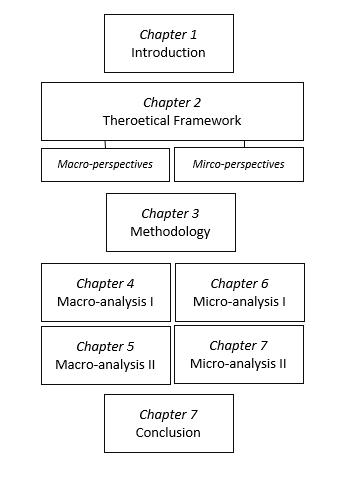
Master Academia
Get new content delivered directly to your inbox.
Subscribe and receive Master Academia's quarterly newsletter.
The most useful academic social networking sites for PhD students
10 reasons not to do a master's degree, related articles.

Better thesis writing with the Pomodoro® technique

75 linking words for academic writing (+examples)

First meeting with your dissertation supervisor: What to expect

How to find a reputable academic dissertation editor

Thesis Introduction
Ai generator.
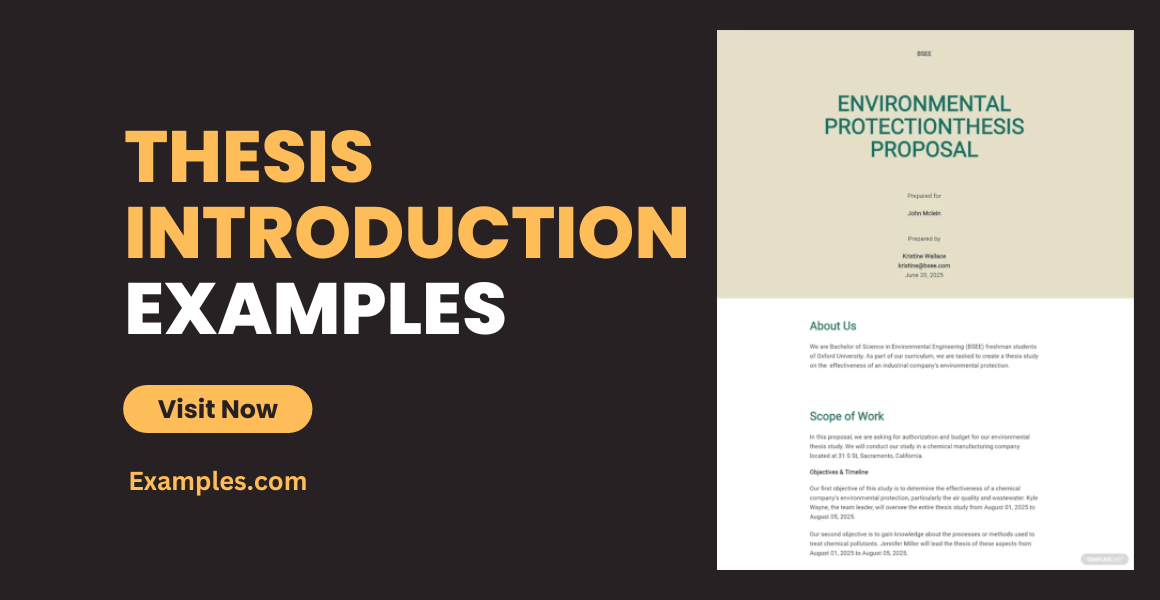
After coming up with your desired topic for your thesis, it is about time that you began preparing that introduction. Just like every good speech or story, you need to have an introduction as to what your thesis outline is all about and what aspects your research will be covering.
In the introduction part of your thesis, you should be trying to focus on three main things, which are called Moves, according to the University of New South Wales database:

Move 1. E stablish your territory
By marking your territory, you begin to elaborate on what your topic is about and its present situation at hand. In doing so, there is also a need for you to point out that your area of research will only be limited to this scope, and for it to go beyond your area of responsibility would be out of the context. You may also see essay examples .
Move 2. E stablish a niche
This section is the heart and soul of your introduction. Without this, why was there even the need to conduct your research in the first place if you do not know what for?
Move 3. Introduce the current research
In conclusion to your introduction, this is where your research steps into the spotlight. In this part, you will be giving the panel a glimpse of the questions the researchers would be tackling during the course of the thesis journey. Aside from stating the hypotheses in this section, it is also important for the researchers to identify early on the end goals the study wants to achieve. You may also see thesis statement .
Each Move has a number of stages. Depending on what you need to say in your introduction, you might use one or more stages. You will also find examples of introductions, divided into stages with sample sentence extracts.
Most thesis introductions include some (but not all) of the stages listed below. There are variations between different schools and between different thesis, depending on the purpose of the thesis. You may also see essay writings .
Stages in a thesis introduction
- State the general topic and give some background.
- Provide a review of the literature related to the topic.
- Define the terms and scope of the topic.
- Outline the current situation.
- Evaluate the current situation (advantages/ disadvantages) and identify the gap.
- Identify the importance of the proposed research.
- State the research problem/questions.
- State the research aims and/or research objectives
- State the hypotheses.
- Outline the order of information in the thesis.
- Outline the methodology.
Listed below is a sample thesis introduction that was made by me and my partner during our college days. You may notice in the introduction, proponents of previous researchers who have conducted a similar study before since the opinion of experts gives the study basis and grounds as to why this topic requires more future studies. You may also see thesis proposal .
Introduction
Even as traditional media continues to be overshadowed by the insurmountable rise of electronic technology such as internet and mobile phones to access online information, daily newspapers have remained to be a key platform in disseminating public information which incites public discourse. A banner story of a newspaper is considered the highlight and most important news story of the day as newspapers follow an order of stories by arranging them of importance from front to inside pages (Tewksbury, 2002). You may also see personal essay .
At present, however, the media is confronted with issues such as making sensationalized, misleading, and satirical news stories not primarily to provide what the readers need to know, but rather to increase the issue’s marketability and compensate for the company’s production cost. Its gigantic headline running from corner to corner accompanied by its banner picture along with the story itself are put in place to draw readers’ attention and set the tone of the issue (Saxena, 2013). These existing practices greatly affect the placement of news stories from the most relevant and significant ones to the least leaving behind many substantial stories given less attention or least, under-reported. Moreover, this dilemma defeats the purpose of the main objectiveof journalism which is to provide the citizenry with information that is vital in shaping their realities and guide them in their decision making which then collates to a more systematic society. You may also see persuasive essay .
For instance, a local English daily placed the slain Bohol town mayor’s story, which reached national coverage, as its banner story of the issue while placing the progress of Cebu City’s Bus Rail Transit (BRT) project, which offers an opportunity for citizens to escape from the almost unmanageable metropolitan traffic jam when pushed through, in the latter pages of the issue. More so, with the long-aged flood problem in the metropolis especially during rainy season, a local English daily published on its second page an article entitled “Garganera: No program to solve flooding” due to the lack of comprehensive programs. You may also see short essay .
However, this did not land in the banner story, despite the relevance and the problem it seeks to raise; instead, a story about a landslide that killed two people was the highlight of the day. Hence, as it can be observed, politics, crime or disaster-based news which would likely create a stir among readers are most often than not picked as the banner story of the day. There are other news stories in other news categories that if written with the right angle and is deemed timely, can have its chance at the banner story. The news is a by-product of a journalist’s job of gathering enough evidence, conducting interviews and constant research in pursuit of the truth. In a newsroom, it is the editorial board that decides what news should be placed as the banner story which they perceive to be the most relevant news for the public to know. You may also see essay examples .
But sometimes, what the newspapers present as their banner story may not really align with the readers’ interests or perhaps may not strike as the most important or critical issue of the day. According to MacGregor (2007), journalists have been known to stray from their audiences in the context of traditional media. Gieber asserts (1960: 2004) that “news selection has no direct relationship to the wants of readers.” Gans (1979) further emphasizes Gieber’s point saying that journalists pay little to no attention to audience feedback, but place certain news together based on what they think would interest their audiences. You may also see reflective essay .
However, most, if not all of the reading public has no clue on how the editorial board decides each story’s position and inclusion. A proof of the abovementioned issues encompassing the news media industry is the presence of internal watchdogs that specialize on in-depth journalism to cover that under-reported news that is often overlooked by the mainstream news media. The Reuters Foundation is among those that provide the public with stories unlikely read or seen in the mainstream news such as humanitarian, women’s rights, human trafficking-based news. You may also see student essay .
One way or another, the media, in whatever form that it takes will never be perfect and will always be accused of bias and sensationalism which leads to public distrust. According to the analysis of some scholars, (Blumler and Gurevitch, 1995; McManus, 1994; Grabe et al., 2001) they have observed that the news is becoming more sensational or ‘tabloid-like’ over time. These kinds of stories may render the news more ‘colorful’ but are not exactly more informative (Blumler and Gurevitch, 1995; Franklin, 2005). You may also see analytical essay
Which is why one other end goal that the study wants to achieve is for each newspaper editorial board to be transparent on how the body decides each story should be written as well as the selection process of the news stories that determine which page each story belongs to. At the same time, it is also crucial that the public themselves understand how the editorial process is being done to grasp the concept behind story selection and editorial judgment in hopes that the strong trust between the public and the media will be restored once more as the media continues to deliver the news to the reading public with the challenge that they remain loyal and trustworthy by them.You may also see concept essay .
Only front-page studies are available for the researchers’ basis for their research as there were very minimal studies on banner stories. This study will be conducted for the purpose of understanding the present landscape of Cebu’s three local English newspapers. As compared to other media researchers, this will focus on identifying the most frequent news category published in the banner story of Cebu’s three local English newspapers: Cebu Daily News, SunStar Cebu, and The Freeman. Additionally, the researchers would also analyze the rhetoric of the dailies based on 1) the news values assigned by the journalists in every news story, and 2) the standard basis utilized by each newspaper’s editorial board in the selection process of news stories.You may also see comparative essay .
If you think the Introduction part of the thesis is exhausting, just wait until you get to the theoretical background and the review of related literature. They say those parts just crushes the soul out of you during the first half of your thesis writing. But do not fret. Because even though writing a thesis is like taking a walk in the park (Jurassic Park), all that hassle is really worth the tassel. Good luck!
Thesis Table Of Contents Template
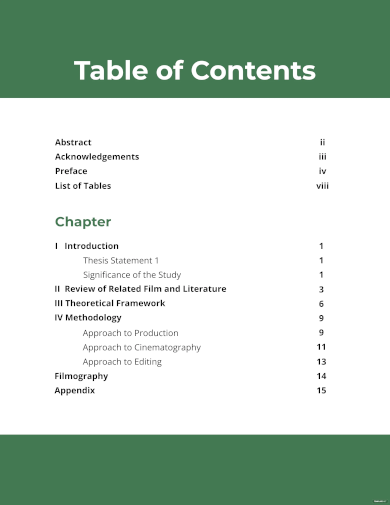
- Google Docs
- Apple Pages
- MS Publisher
Size: 36 KB
Thesis Proposal Template
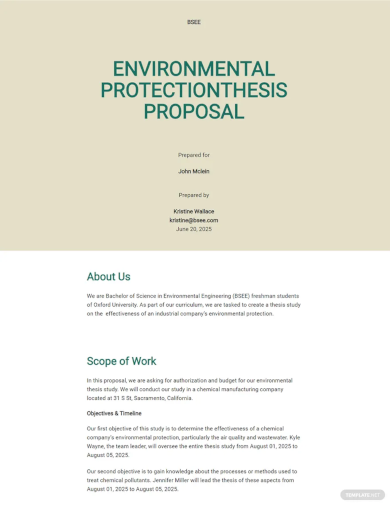
Size: 80 KB
Thesis Proposal Gantt Chart Template
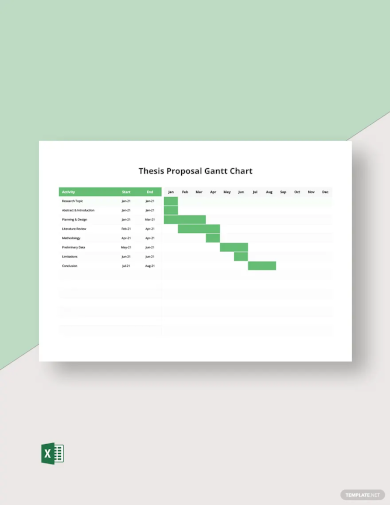
Size: 30 KB
Text prompt
- Instructive
- Professional
10 Examples of Public speaking
20 Examples of Gas lighting
- AI Detector and Humanizer
- Business Solutions
- Try it Free
How to Write a Thesis Introduction (with Examples)

As Ralph Waldo Emerson once said, “Sometimes a scream is better than a thesis.” While it’s ironically the case for many, writing a thesis is basically the culmination of your hard work.
There’s a certain pride in accomplishing such a task, and many people hold it close to their hearts throughout their lifetimes.
This showcases a student’s ability to contribute original insights to their field and opens many more doors to broaden their academic and professional opportunities. Finishing a thesis certainly has weight.
The great thing about education today is that technology can help make things easier. AI tools, for instance, can assist with writing research papers and doing thesis work.
Even teachers can utilize the power of AI to improve their ways of teaching – but more on the exciting AI stuff later.
What you need to start with for your thesis is to create a strong introduction. Your thesis intro sets the tone for your entire work, so getting it right is important.
Here’s everything you need to know on how to write a thesis introduction that instantly catches the eye and informs effectively at a glance.
What Types of Information Should Be Included in Your Thesis Introduction?
After days and nights of researching, typing, and editing, the general average thesis length ends up at around 20-50 pages.

A PhD dissertation, usually tougher, can go up to 90-500 pages long. That’s a lot of work.
With so much information to showcase, your thesis intro should be able to make a big impression. A weak introduction can mislead your readers and even diminish the value of your entire thesis.

Never Worry About AI Detecting Your Texts Again. Undetectable AI Can Help You:
- Make your AI assisted writing appear human-like.
- Bypass all major AI detection tools with just one click.
- Use AI safely and confidently in school and work.
As the first impression of your work, the intro sets the stage by providing some context, highlighting the research problem, and laying out your objectives clearly.
It can be intimidating just thinking about it, so we’re here to make sure your thesis intro delivers the punch it needs. Here are some things that you should include.
Have an attention-grabbing opening
In the marketing world, you’ve only got eight seconds to grab a customer’s attention; that’s the average attention span.
While your teacher won’t drop your thesis if your introduction doesn’t grab them within seconds, having a great opening can still make a strong impact.
The main goal here is to present a compelling hook that sparks curiosity.
Include a surprising statistic, engage with a thought-provoking question, share a short but relatable anecdote, or try to be daring and make a bold statement that shocks but relates to your research topic.
There are many ways to do it, but ultimately, you want to engage your reader right from the start.
Provide context and the importance of the topic
“In this thesis, we will be exploring the effects of social media on communication.” Why, though? And what part of social media are we talking about here?
This is a bad example of a thesis intro because it lacks context.
Instead of simply choosing a controversial or topical subject to make an impact, you need to go deeper straight away.
The goal of providing context is to guide your reader in understanding why your topic is worth discussing in the first place.
You can offer a brief overview of already existing research and how you can add to it, and also show the gaps and unresolved issues that your study aims to fix.
Highlighting your topic goes to show that it’s an important matter to discuss in your field.
Engage through specific questions that your research addresses
One of the best ways to make your thesis intro stand out is by asking specific questions.
For example, if your research is about the effects of social media on traditional media, rather than just stating it outright, you can start off with an engaging question like “Is social media ending the age of the newspaper?”
In this way, you instantly grab the attention of your reader with a compelling question while still providing a sense of what your research will be about.
It’s a two-punch combo of showing immediate purpose and relevance while making your thesis intro easy to follow.
Frame your research in the form of specific and engaging questions so you can lay the groundwork for a more focused thesis.
Thesis Introduction Tips

So far, a good thesis introduction should be able to outline the main topic clearly, present some compelling questions, and provide context and significance for the study.
It’s definitely not easy, but there are ways to make it more doable. Here are some handy thesis introduction tips to help you out.
Know your audience
Knowing your audience means that you understand who will be reading your thesis. By doing this, you can create an introduction that meets their expectations and interests.
When writing a thesis intro, you should be able to consider the background, knowledge level, and interests of the thesis readers – your advisor, committee members, and other related academics.
Knowing this, you can set the right tone, which is usually formal, and engage in a way that interests them.
Refer to your thesis proposal or notes
If you want to make a seamless thesis paper, you will constantly need to refer to your proposal and notes.
You should refer to all the preliminary work that you’ve done to direct the writing of your introduction.
This can include your research questions, objectives, literature review, and methodology that you’ve outlined for your proposal.
It’s always important to go back and review your thesis notes regularly because these help you:
- Ensure that your thesis introduction is consistent with your original proposal.
- Present the main elements of your research.
- Organize your thoughts and create a well-structured introduction, contributing to your overall thesis flow.
Keep your thesis proposal and notes by your side. They will help you create a strong introduction that provides clear context for your research.
Use Assistant AI tools to help with writing and proofreading
Especially when it comes to writing, AI tools have become quite useful.
You might already be familiar with ChatGPT, which uses advanced algorithms to generate the needed content; it can even proofread text .
AI tools can be useful to writers and researchers by offering suggestions and writing parts of the work that they can improve later.
This makes the writing process a whole lot more efficient and much less time-consuming. With AI, you can essentially produce high-quality work under tight deadlines.
However, while AI tools are clearly helpful, it’s necessary that you still use them responsibly.
AI plagiarism is a growing concern that happens when any AI-generated content is presented as original work without giving the right acknowledgment.
This can severely damage the credibility of your research and even get you in trouble.
Treat AI as what it’s intended to be – a tool – rather than the main writer of your work. You should still be the writer of your own work.
To avoid any issue with AI, a reliable detector like Undetectable AI can be used to always make sure that your content passes as human-written.

Undetectable analyzes any text you submit to effectively detect AI content. It also includes features like a humanizer that adjusts the writing to match a natural human tone .
We certainly don’t want to stop you from maximizing your potential with the help of AI, so with a useful AI detector and humanizer by your side, you can always get the results you want.
You can try Undetectable AI easily with the widget below (English only). Just input your text and see how it can transform your writing!
Make sure you clearly state your topic, aims, and objectives
This one is essential. Your thesis introduction should be able to clearly define what your research is about (topic), what you plan to accomplish (aims), and the steps you’re taking to get there (objectives).
It’s pretty straightforward and is a no-brainer, but you must do this for several reasons:
- Helps your readers understand the focus of your research right from the get-go.
- Sets clear expectations for your thesis.
- Establishes relevance, making your work highly credible.
- Easier assessment (whether you’ve achieved your goals) by your advisor and evaluators.
Remember, a well-defined introduction is your first step toward a successful thesis. Make it matter.
Explain why your research matters
If your thesis doesn’t make an impact in your field, then it might not be seen as valuable. So, from the start, be sure to explain why your research matters.
This provides a basis for why you’re choosing a specific topic in the first place and explaining why it deserves their attention.
To help, you can also link your research to real-world applications or social issues to enhance its appeal to the research community and beyond.
3 Thesis Introduction Examples to Inspire You

Writing a thesis introduction can be quite a challenge, but looking at examples can help you understand how to start your research on the right foot.
Communications Example
“Is social media ending the age of the newspaper?” This question frequently arises in discussions as the communication landscape continuously evolves.
Platforms like Facebook, X (previously called Twitter), and Instagram continue to grow, and their impact on traditional media – newspapers, television, and radio – becomes more significant and complex.
Social media has drastically changed how people access information. Unlike traditional media, which professional journalists and editors usually produce, social media allows anyone to create and share content.
This shift has huge implications for both media producers and consumers. Understanding these changes is important for professionals in the field and the general population.
This thesis aims to answer several questions: How has social media affected the credibility of traditional news sources?
What strategies are traditional media adopting to compete in a digital world? And how do today’s audiences perceive news found on social media vs traditional platforms?
By addressing these questions, this research seeks to provide a comprehensive understanding of the current media landscape and provide some discourse on the future of communication and modern-day responsible journalism.

Environmental Science Example
Food production is one of the largest contributors to environmental damage.
The methods that we traditionally use to grow and raise our food have serious implications for resource use, greenhouse gas emissions, and land use.
So, we ask the question, “Can our food choices save the planet?”
As global populations rise and climate change accelerates, understanding the environmental impact of different food production systems has never been more important.
Plant-based agriculture and animal-based agriculture differ considerably, so studying these differences can help identify sustainable practices that minimize and ultimately prevent environmental damage.
This thesis aims to address how plant-based and animal-based food production systems compare in terms of resource use and environmental impact and what practices within these systems can reduce their impact on the environment.
Education Example
The global pandemic has made a dent in how we live, and that includes the state of education.
During this difficult time, schools and universities worldwide were essentially forced to shift to online learning almost overnight.
This sudden and widespread adoption of online learning presents a unique opportunity to assess its effectiveness and impact on education – past the pandemic.
If online learning is actually shown to be effective, it could lead to more flexible, accessible, and inclusive educational practices.
Conversely, if notable shortcomings are identified, this can highlight areas that need improvement to support students and educators better.
This thesis aims to identify the effectiveness of online learning in achieving educational outcomes compared to traditional classroom settings, the major challenges faced by students and educators during this transition, and how factors such as socioeconomic status and access to technology influence the effectiveness of online learning.
With this study, we can provide valuable insights into the strengths and weaknesses of online education, contributing to the broader discussion of post-pandemic learning.
How do you start an introduction for a thesis?
To start a thesis introduction, start with a hook that draws the reader in and sets the stage for your research topic. Provide context by discussing the significance of the topic. Then transition into your thesis statement, which outlines the main argument or purpose of your research.
What is an example of a thesis statement in an introduction?
An example of a thesis statement in an introduction could be: “This thesis examines how social media platforms like Facebook, Instagram, and X (formerly Twitter) have reshaped how individuals interact and form relationships in the digital age, with an emphasis on interpersonal communication.” Clearly state the main focus and purpose of your research and provide a roadmap for the reader to understand what will be discussed in your thesis.
What is a good way to start a thesis statement?
You could start a thesis statement by introducing your topic and talking about the specific angle you plan to explore in your research. Grab the reader’s attention and establish why it’s worth investigating further.
How do you start writing a thesis?
Writing a thesis starts with choosing a topic that interests you – and then aligns with your field. Be sure that the main goal of your thesis stays relevant to gain some credibility. With this, you can create a clear thesis statement that outlines the main objective of your study. This is where you can start drafting a compelling thesis introduction and then filling your content with strong arguments that are supported by evidence and analysis. Firmly conclude with a summary of your findings and their implications. Always cite your sources accurately and follow the academic guidelines.
Maximizing the potential of your thesis always starts with an introduction, and with the help of AI tools, you can be confident to write a strong one.
When using these tools, just be sure to have Undetectable AI by your side so that any content you need assistance with stays authentic.
The humanizer feature matches real human writing styles as closely as possible so that your content speaks to your readers.
Remember to tailor your thesis introduction to your specific research topic and audience, and use examples and evidence to back up your claims.
With these strategies in mind, you’ll be well-equipped to write an impactful thesis introduction – paving the way for a great thesis.
Thesis Introduction: Definition, Length, Examples & How-to Guide
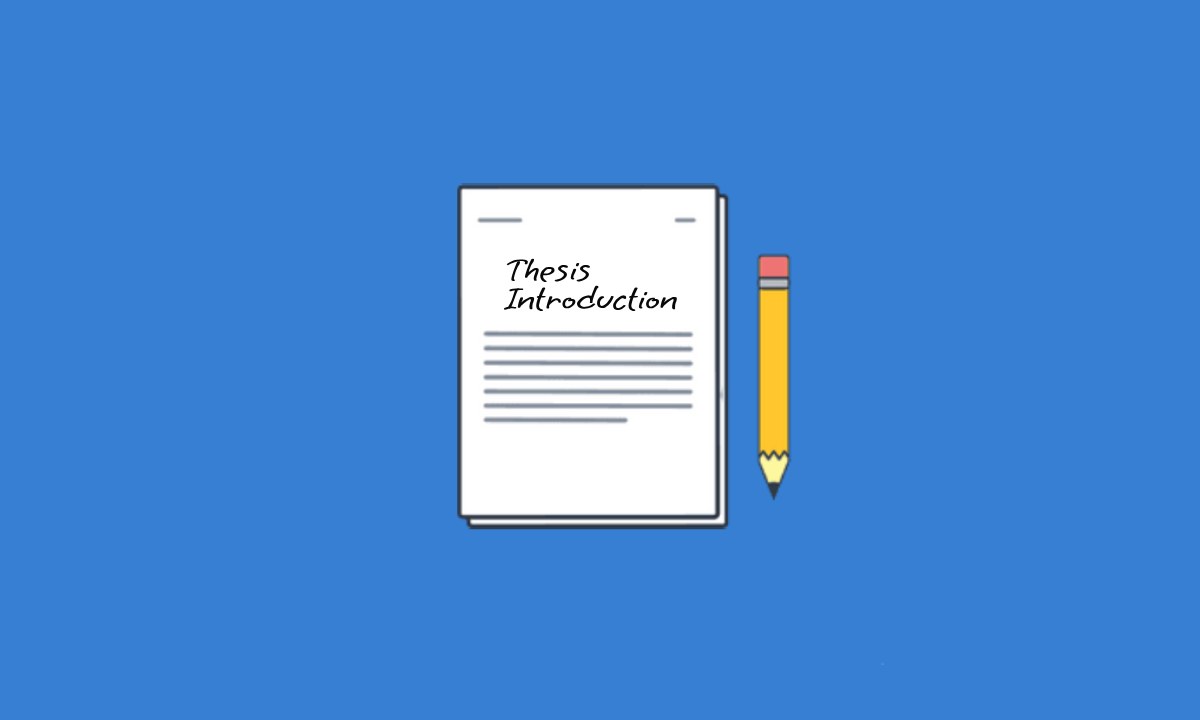
What is Thesis Introduction?
The thesis introduction is the opening section of a thesis or dissertation that introduces the research topic, explains its significance, outlines the purpose and objectives of the research, provides a roadmap for the document’s structure, and engages the reader’s interest with a compelling opening statement. It culminates in a concise thesis statement that summarizes the main argument or focus of the entire thesis. The introduction serves as the entry point to the research work, guiding the reader and setting the tone for the rest of the document.
Table of Contents
What Should be in the Introduction of a Thesis?
Background and Context: Start by providing background information on the topic of your thesis. This can include the historical context, relevant theories, previous research, or any significant events or developments that led to your research question. Essentially, you’re outlining what is already known about the subject.
Research Problem or Question: Clearly state the research problem or question that your thesis aims to address. This is the central focus of your work and should be articulated in a way that highlights its importance and relevance to the field.
Objectives or Purpose: Outline the specific objectives or purpose of your research. What do you hope to achieve by conducting this study? These objectives should align with addressing the research problem or question you’ve identified.
Scope and Limitations: Define the scope of your study, including what aspects of the topic you will be focusing on and what will be excluded. Additionally, acknowledge any limitations that may impact the validity or generalizability of your findings.
Significance of the Study: Discuss why your research is important and how it contributes to the existing body of knowledge in your field. Highlight any potential practical implications or theoretical advancements that may result from your work.
Overview of the Thesis Structure: Provide a brief overview of how the thesis is organized. Outline the main sections or chapters and briefly describe what each will cover.
Theoretical Framework (if applicable): If your research is grounded in a specific theoretical framework or conceptual model, briefly introduce it in the introduction. Explain why you’ve chosen this framework and how it informs your study.
Methodological Approach: Depending on your field and research design, you may also want to include a brief overview of your methodological approach. This could include the research design, data collection methods, and data analysis techniques you’ll be using.
How Long Should a Thesis Introduction Be?
The length of a thesis introduction can vary depending on several factors, including the specific requirements of your academic institution, the complexity of your research topic, and the overall length of your thesis. However, as a general guideline, the introduction typically ranges from 5% to 10% of the total word count of the thesis.
For example, if your thesis is 10,000 words long, the introduction would typically be around 500 to 1,000 words. Similarly, if your thesis is 20,000 words, the introduction would range from approximately 1,000 to 2,000 words.
How To Write Thesis Introduction?
Writing a good thesis introduction is crucial because it sets the stage for your entire research work. It should provide a clear overview of your research topic, its significance, and the structure of your thesis. Here’s a step-by-step guide to help you write an effective thesis introduction:
Understand the Purpose:
Before you start writing, make sure you have a clear understanding of the purpose of your thesis introduction. It should introduce the reader to your research topic, establish its importance, and provide an overview of your thesis structure.
Begin with a Hook:
Start your introduction with a compelling hook or opening statement that grabs the reader’s attention. It could be a surprising fact, a thought-provoking question, a relevant quote, or a brief anecdote related to your research topic.
Provide Background Information:
After the hook, provide some background information about your research topic. Explain why it is important and relevant to your field of study. This helps the reader understand the context of your research.
State the Research Problem or Question:
Clearly state the research problem or question that your thesis aims to address. This should be concise and specific. It should also convey the significance of your research by highlighting the gap or problem in the existing literature.
Justify the Research:
Explain why your research is necessary. Discuss the potential benefits or contributions it can make to your field of study or society in general. Highlight any practical or theoretical implications of your research.
Outline the Objectives or Hypotheses:
Present the objectives of your research or the hypotheses you intend to test. These should be aligned with your research problem and provide a clear direction for your study.
Discuss the Scope and Limitations:
Define the scope of your thesis by specifying the boundaries of your research. Mention any limitations or constraints that may affect the generalizability of your findings. Being transparent about these aspects demonstrates your awareness of potential limitations.
Provide an Overview of the Structure:
Briefly outline the structure of your thesis. Mention the main chapters or sections and their order. This gives the reader a roadmap of what to expect in the rest of the document.
Write a Thesis Statement:
Conclude your introduction with a clear and concise thesis statement. This statement should encapsulate the main argument or purpose of your thesis. It should be specific and debatable.
Revise and Refine:
After writing the initial draft, revise and refine your introduction. Ensure that it flows logically, is free from jargon, and is easy for a general audience to understand. Pay attention to grammar, punctuation, and clarity.
Seek Feedback:
Share your introduction with peers, advisors, or mentors to get feedback. They can provide valuable insights and suggestions for improvement.
Before submitting your thesis, carefully proofread your introduction to eliminate any errors in grammar, spelling, or formatting.
Below are some examples of thesis introductions that will help you write good introductions.
Thesis Introduction Examples
Environmental science thesis introduction.
In recent decades, the alarming rate of deforestation in the Amazon rainforest has raised significant concerns worldwide. This tropical ecosystem is not only a biodiversity hotspot but also plays a crucial role in regulating global climate patterns. Despite international efforts to curb deforestation, the problem persists. This thesis seeks to understand the underlying drivers of deforestation in the Amazon and propose policy recommendations for more effective conservation strategies.
Psychology Thesis Introduction
Anxiety disorders affect millions of individuals, leading to decreased quality of life and impaired functioning. Cognitive-behavioral therapy (CBT) has been a widely accepted treatment for various anxiety disorders, but its efficacy varies among individuals. This thesis explores the factors that influence the effectiveness of CBT in the treatment of anxiety disorders and aims to identify personalized treatment approaches based on patient characteristics.
History Thesis Introduction
The Industrial Revolution of the 18th and 19th centuries marked a profound shift in human history. This period of rapid industrialization and urbanization brought about significant societal changes. However, the impact of the Industrial Revolution on the lives of women in England remains an understudied aspect of this era. This thesis delves into the experiences of working-class women during the Industrial Revolution and their contributions to the labor force and social reform movements.
Computer Science Thesis Introduction
The exponential growth of data in the digital age has given rise to numerous challenges in data management and analysis. Traditional relational databases struggle to handle the volume and variety of data generated today. This thesis explores the potential of NoSQL databases as a solution for managing and processing big data and evaluates their performance in comparison to traditional relational databases.
Sociology Thesis Introduction
Social media platforms have become an integral part of modern society, shaping how individuals communicate and interact. This thesis investigates the impact of social media on interpersonal relationships and explores whether online interactions are replacing or enhancing face-to-face communication. Understanding these dynamics is essential in the context of an increasingly digitalized world.
Economics Thesis Introduction
Income inequality has been a persistent issue in many countries, with wide-ranging economic and social implications. This thesis examines the relationship between fiscal policies and income inequality, with a focus on how progressive taxation and social welfare programs influence wealth distribution. The findings aim to inform policymakers on strategies to address income inequality effectively.
Each introduction provides a clear overview of the research problem, its significance, and the research objectives, setting the stage for the rest of the thesis.
In conclusion, the thesis introduction is your chance to make a strong first impression on your readers. It sets the stage for your research, highlighting its significance and providing a clear roadmap. By following the step-by-step guide we’ve outlined and studying the examples provided, you can hone your skills in crafting compelling and effective thesis introductions
Related Posts
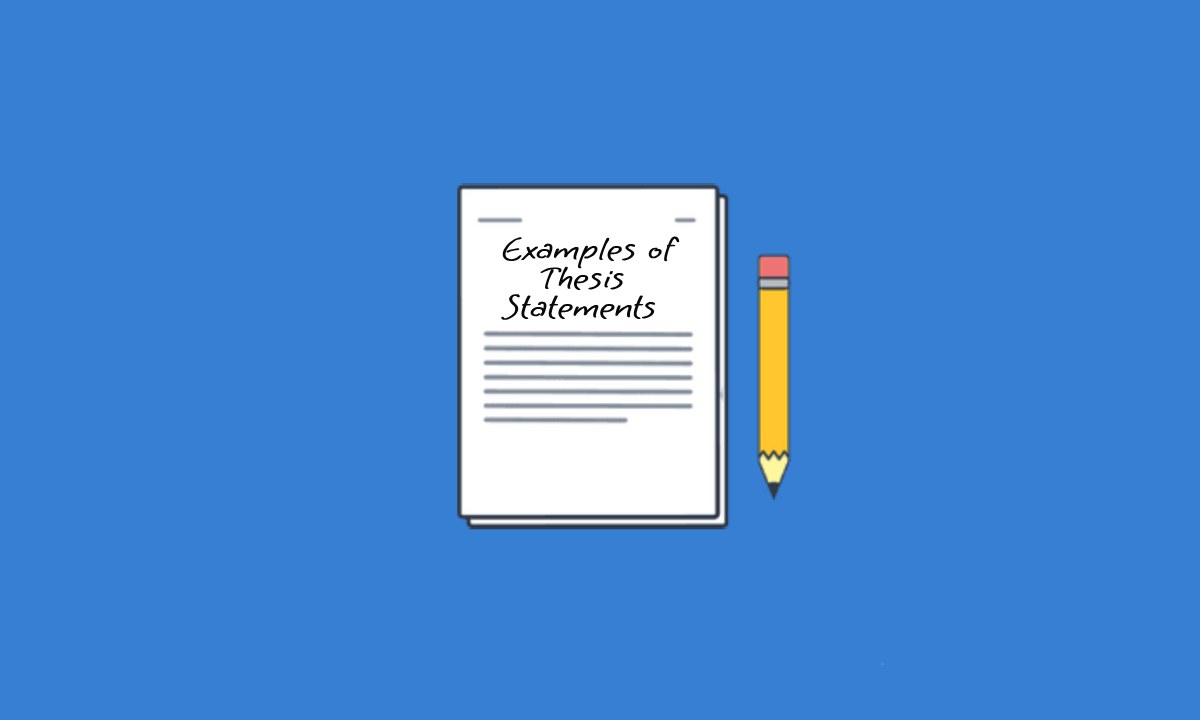
20+ Examples of Thesis Statements
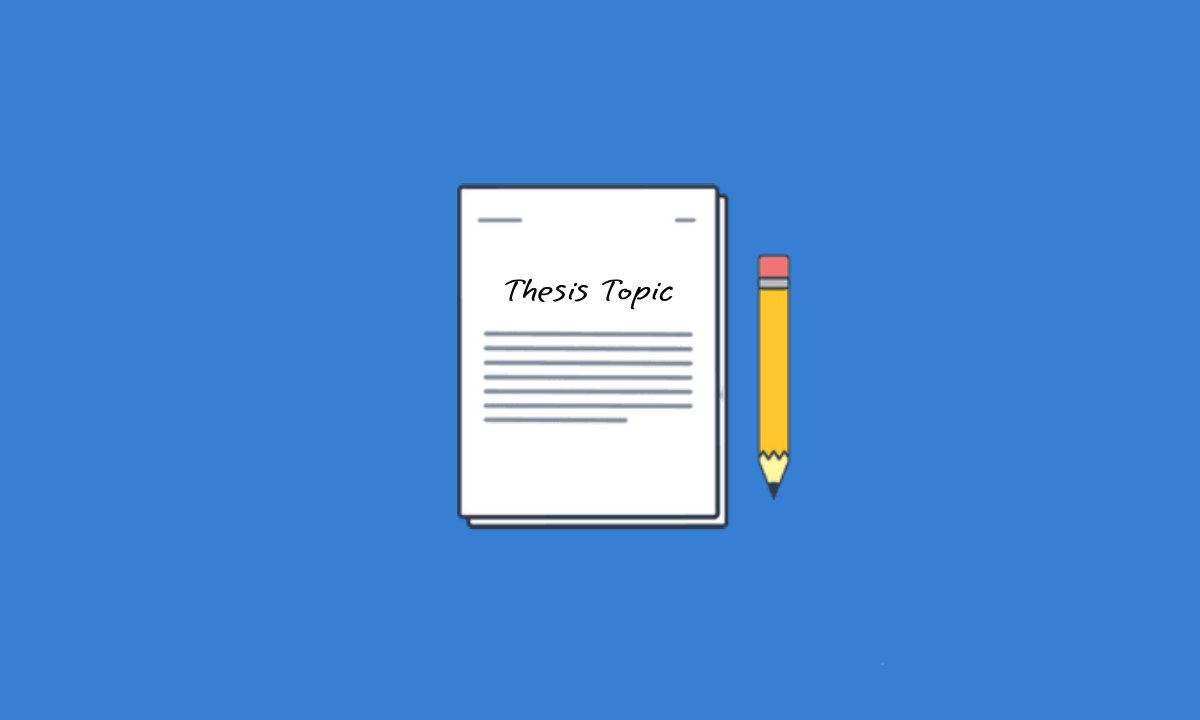
Thesis Topic: Definition, Factors, How-to & Examples
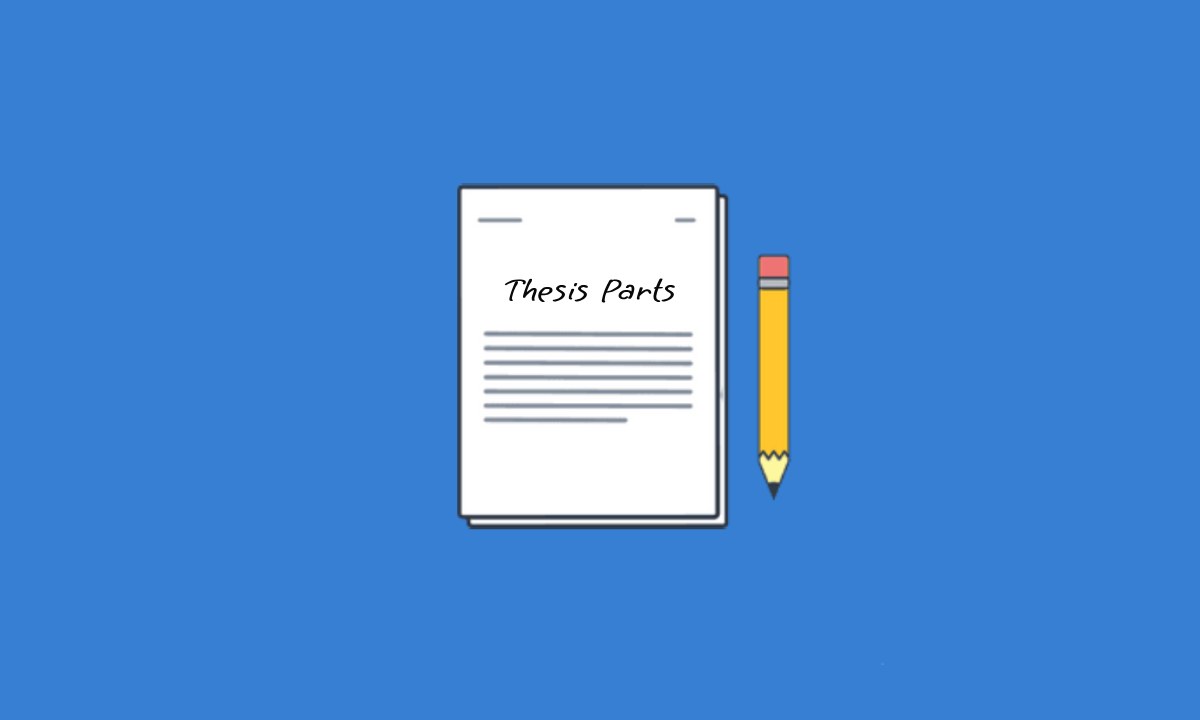
5 Major Parts That a Thesis Must Include

IMAGES
COMMENTS
The thesis introduction, usually chapter 1, is one of the most important chapters of a thesis. It sets the scene. It previews key arguments and findings. And it helps the reader to understand the structure of the thesis. In short, a lot is riding on this first chapter. With the following tips, you can write a powerful thesis introduction.
Jul 23, 2024 · Listed below is a sample thesis introduction that was made by me and my partner during our college days. You may notice in the introduction, proponents of previous researchers who have conducted a similar study before since the opinion of experts gives the study basis and grounds as to why this topic requires more future studies.
Sep 7, 2022 · Example topic Attitudes of young people toward climate change. Example context Share a recent news story about a children’s climate strike, or the increasing importance of youth engagement in climate politics. Focus and scope. After a brief introduction to your general area of interest, narrow your focus and define the scope of your research.
Jun 7, 2024 · An example of a thesis statement in an introduction could be: “This thesis examines how social media platforms like Facebook, Instagram, and X (formerly Twitter) have reshaped how individuals interact and form relationships in the digital age, with an emphasis on interpersonal communication.”
For example, if your thesis is 10,000 words long, the introduction would typically be around 500 to 1,000 words. Similarly, if your thesis is 20,000 words, the introduction would range from approximately 1,000 to 2,000 words.
Sample Thesis/Dissertation Approval (TDA) Form Master’s Students . ... Sample Text Page . CHAPTER 1 INTRODUCTION . 1.1 WHAT IS COFFEE?required by Graduate .